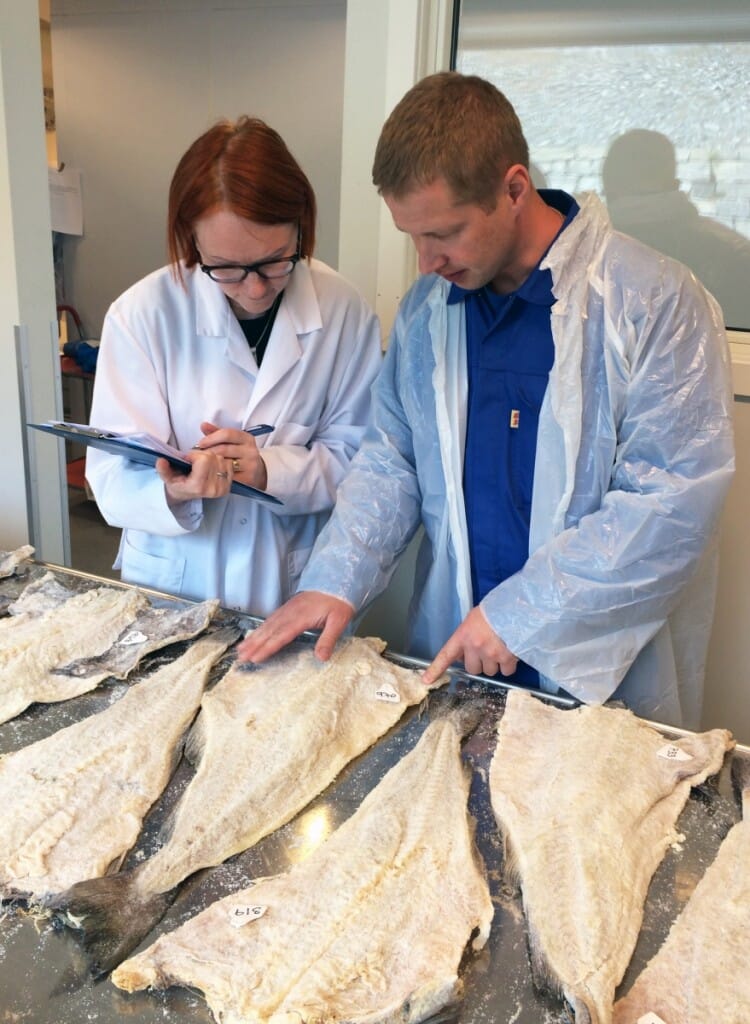Clipfish is a popular product in many countries all over the world, and around 120,000 tons ia produced globally every year. Norway, Iceland, the Faeroe Islands, Portugal and China are mainly responsible for production. Clipfish has a long shelf life, but exactly how long has not been documented until now.
Clipfish has so far been labelled with a shelf life of one year, with some variations among markets. Labelling of shelf life has also to some extent been subject to agreement between producers and buyers.
Now shelf life has been scientifically documented.
“Our trials show that commercial clipfish produced from cod has good stability. As long as it is kept at a temperature of four degrees or lower, it will keep for at least two years,” says senior scientist Grete Lorentzen at Nofima.
However, research also shows that handling of the fish before and during the actual salting process is very important for which quality category the fish attains – and thus also which price it achieves.
“It is particularly important that the fish has been properly bled and that liver remains are removed. Spots of blood and liver result in discolouration that becomes particularly evident when the dried and salted fish is stored for longer periods,” Lorentzen says.
Studies of commercial fish
In 2013 Nofima started a research project where the goal was to study shelf life for clipfish stored at a temperature of four degrees. The project was funded by the Norwegian Seafood Research Fund.
Clipfish from five different commercial producers was purchased and stored for twenty six months, under conditions where scientists had complete control of temperature and humidity. The smell and look of the fish was assessed every six months. The fish was then photographed using a special camera for extremely high resolution images to uncover any changes in colour.
The special images revealed that the fish becomes more yellow and darker during the storage period, which is due to natural processes in the fish. Clipfish that has matured also has a different smell than newly dried fish.

Sorted by experts
After two years of storage, sorting (quality assessment) was carried out.
Ten professional sorters from the Norwegian clipfish industry were responsible for the sorting. They were not given any prior information on either the project or the fish, so that they could impartially assess the fish with export to the Brazilian market in mind. The sorters were unanimous in their assessments.
In addition to discolouration, they largely uncovered the same quality defects in the fish – including splitting, blood remains and liver stains. These quality defects don’t affect shelf life, but were decisive for which quality category the fish achieved.
Higher temperature storage results in discolouration
In smaller markets one doesn’t necessarily have the opportunity for cold storage. For this reason the scientists also carried out experiments where they stored self-produced clipfish at temperatures of 25, 30 and 35 degrees.
After a certain period of storage, the fish had obtained a visibly red discolouration. This is due to growth of red halophes that occur naturally in the salt used to salt the dried and salted fish. The bacteria are not harmful, but if the fish is discoloured as a result of red halophilic bacteria, it is not considered fit for sale. It’s safe to eat fish with the bacteria. Red halophilic bacteria start to grow when the temperature rises above eight degrees, and conditions for growth are most favourable at temperatures between 35 and 41 degrees.
“Shelf life is influenced by a number of factors, including ambient temperature and relative humidity, moisture content of the fish, packaging method and bacteria content. But it’s important to be aware that the shelf life of clipfish is significantly reduced when stored at high temperatures,” Grete Lorentzen says.
Clipfish stored at 30 degrees can keep for at least 17 days with relative humidity of 80 per cent, and for at least 21 days with relative humidity of 60 per cent.
As a part of the project we have drawn up a fact sheet on the shelf life of clipfish, where the conditions for discolouration and red halophilic bacteria are described.




